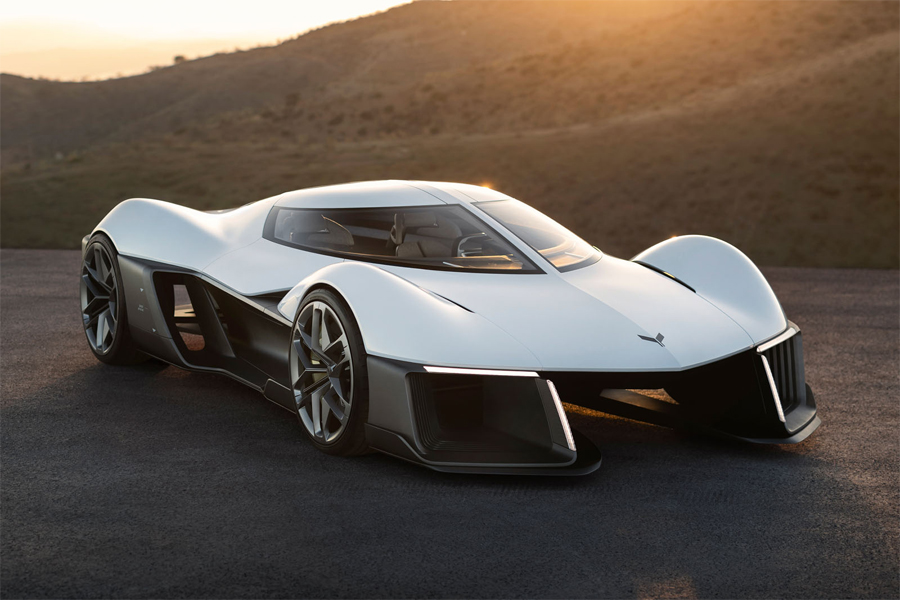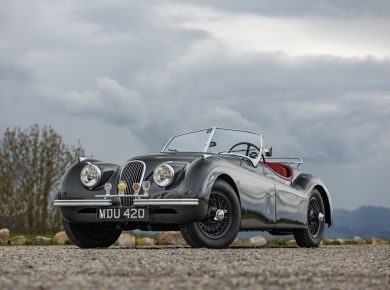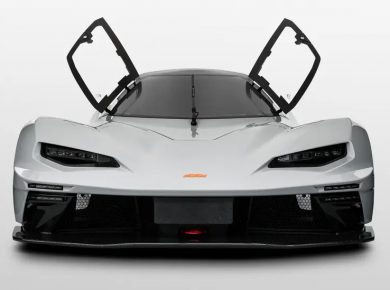
GM just pulled the covers off a British-designed Corvette concept that looks like it was smuggled out of the future. Built at the automaker’s brand-new design hub in Royal Leamington Spa, this mid-engine, electric-leaning concept reimagines the Corvette not through American muscle, but through a distinctly European design lens. The result? Gullwing doors, split windshields, and bodywork so sculpted it could pass for a limited-run hypercar.

Led by Julian Thomson – best known for his work on the Lotus Elise, Range Rover Evoque, and several Jaguars – the design team had free rein to rethink what a Corvette could be. GM calls this a “blank page” project, not a prelude to a production model. But make no mistake: elements here are likely to echo in the next-gen C9 due later this decade.

At first glance, the most dramatic feature is the central spine that slices through the front windshield and stretches all the way to the tail. It’s a modern twist on the 1963 Sting Ray’s split rear glass, and it’s not just for show. This “Apex Vision” design element adds structural stiffness and, surprisingly, improves forward visibility with its panoramic wraparound glass.

The body itself is split in attitude: the top half plays tribute to Corvette heritage with curves and fenders nodding to the Mako Shark concept, while the bottom half is a sculpted aerodynamic playground. Air channels snake through the sides, eliminating the need for wings at lower speeds. But when performance is the priority, the car can deploy dynamic fins and shift its aero profile to maximize grip – similar to how modern hypercars like the Koenigsegg Jesko adapt on the fly.

Open the dramatic gullwing doors and things get even more futuristic. The seats appear molded directly into the structure, the steering is a rectangular yoke, and the center spine may even serve as a display interface. It’s minimalist, functional, and undeniably spaceship-esque.
The concept’s footprint leans fully into exotic territory. At just over 40 inches tall and nearly 86 inches wide, it sits lower and broader than the C8. Its ride height and seat position are aggressively low – think track-only race car low. That’s made possible by a structural EV battery design integrated into the chassis, rather than mounted on top of it.

Performance tech doesn’t stop there. There’s a race car-style pushrod suspension to keep the hood line razor-thin, plus massive 22- and 23-inch wheels. But the wildest touch might be the fan-based aero assist, drawing inspiration from Formula 1’s outlawed ground-effect systems and the modern Gordon Murray T.50. The goal: vacuum-sealed grip for serious cornering.
The entire body structure is 3D printed – or “additive manufactured” – to allow more complex, lightweight designs. That means fewer parts, more rigidity, and shapes you couldn’t make with conventional tooling. The full-glass doors integrate seamlessly with the Apex Vision spine for uninterrupted visibility without compromising strength.

This concept is just the first in a series of three global Corvette design studies GM is rolling out in 2025. Another is rumored to debut at the Goodwood Festival of Speed this July, and a separate GMC concept is also in the pipeline, promising a chunky, angular design with dramatic lighting.
This UK-built Corvette won’t be hitting the road, but it’s more than just a design exercise. It’s a statement – about where the Corvette brand might go, how GM sees the electric future of performance, and what happens when you let a British team reimagine an American legend.






